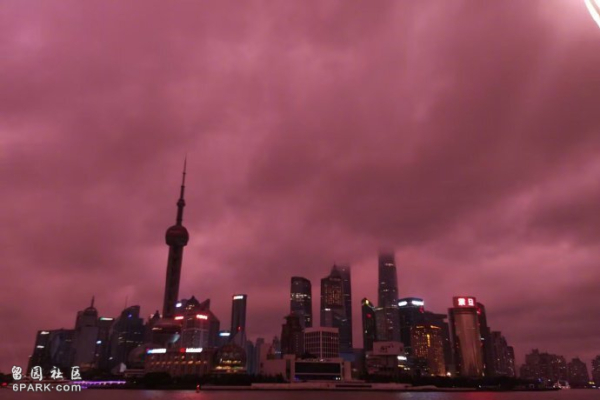Typhoon “Beibijia” made landfall in Pudong, Shanghai today (September 16th) with the strength of a typhoon or severe typhoon. “Beibijia” may be the strongest typhoon to hit Shanghai since 1949. Mainland Chinese media described the rain as feeling like stones hitting one’s face.
The center of Typhoon “Beibijia,” the 13th typhoon of the year (severe typhoon level), landed in Lingang New City in Pudong, Shanghai around 7:30 am on the 16th with maximum winds near the center reaching 14 on the Beaufort scale. “Beibijia” has surpassed Typhoon “Gloria” in 1949, becoming the strongest typhoon to make landfall in Shanghai in 75 years.
Within the typhoon’s ten-level wind circle, mainland Chinese media reported that the rain felt like stones hitting one’s face.
On September 15th, many netizens shared photos of the sky in Shanghai turning purple before the arrival of Typhoon “Beibijia.”
Netizens are discussing eagerly: “The weather is going to change!”
Between 1949 and 2023, a total of 10 typhoons made landfall in Shanghai, mostly as severe tropical storms upon landfall.
After landing, “Beibijia” is expected to move further inland, affecting regions such as Shanghai, Zhejiang, Jiangsu, Anhui, with strong winds and heavy rain. Some areas may experience heavy downpours. The northwestern part of the East China Sea, coastal areas of Shanghai, southeastern Jiangsu, northeastern coastal Zhejiang, Hangzhou Bay, the Yangtze River Estuary, and nearby waters of the Zhoushan Islands are predicted to experience winds of 9 to 11 on the Beaufort scale, with gusts reaching 12 to 13. Residents in Nantong, Jiangsu, Shanghai, Ningbo in Zhejiang, the Zhoushan area should be vigilant against storm surges combined with astronomical tides, leading to seawater surges.

